UPDATE (July 4, 2016 at 1.53am CST): At time of publication, Lao Shaoxing has already been closed down.
Living in Shanghai, the presence of street food on every corner is a quintessential part of daily life. Or at least, it used to be. The fact of the matter is that if you’re living in Shanghai now, you’re witnessing the slow, protracted death of the city’s street food culture, as the places that once sheltered small-time vendors are demolished to make way for the malls, chains and skyscrapers that are the new face of the city.
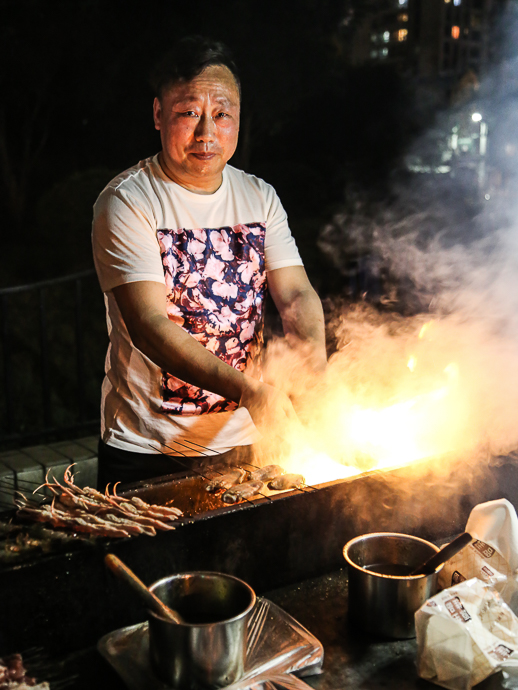
Many of the city’s oldest food streets have already closed. Places like Jing’an’s Wujiang Lu ‘Snack Street,' (which now plays host to international coffee outlets, convenience stores chain restaurants), the 100-year-old Tangjiawan wet market, Pengpu night market and Sipailou Lu food streets have all fallen under the axe of gentrification, replaced with cleaner international chains that fit with the city’s image overhaul.
Now, the last remaining streets are also facing closure, leading to the question: Is the payoff for the modern replacements worthwhile compared to the Shanghainese cultural heritage that will be sacrificed?
For Jamie Barys, co-founder of UnTour Shanghai, a local company that organizes street food tours around the city, the onset of change has been agonizing and slow. “Dozens of the places we used to go have been shut down recently,” she tells me. “We’ve had to re-route our night market tour because so many of the vendors we used to visit simply aren’t there anymore.”
She’s referring mainly to the cart-pushing vendors who used to make their trade selling anything from chaomian (fried noodles), roujiamo (roasted meat buns), stinky tofu, chuan’r (meat and vegetable barbecue skewers) and other cheap, authentic eats that used to be at the core of Shanghai’s food culture.
Where have they gone? “We don’t really know,” Barys says with a shrug. “One day the chengguan [local law enforcement officers] came and disbanded them, and they never came back.”
Shouning Lu
It’s not just the cart-pushing vendors that are feeling the brunt end of the crackdown; hole-in-the-wall eateries too have felt the noose tighten. Shouning Lu, also known as ‘the crayfish street,’ lies at one of the city’s oldest neighborhoods and is lined with small restaurants boiling, grilling and frying enormous quantities of crimson-hued crayfish.

It’s home to family-owned businesses, many waidiren (immigrants from outside of Shanghai) that specialize in street-style seafood. It’s peak crayfish-eating season and the summer air is thick with the smell of garlic and crustacean steam, but despite the bustling atmosphere, there are surprisingly few punters.
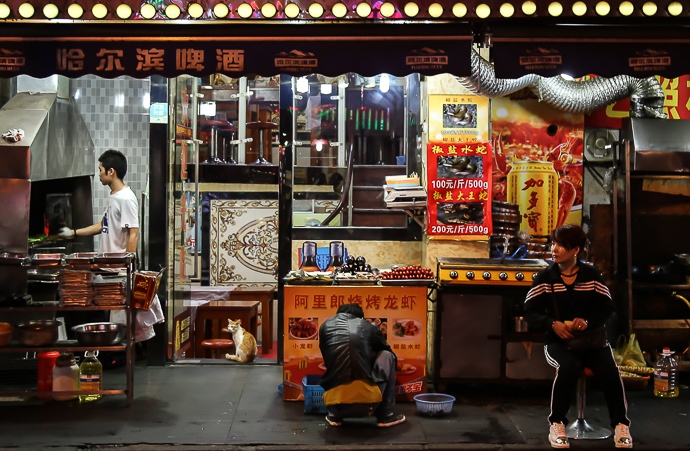
As recently as last year, the street’s sidewalks were peppered with tables filled with locals. Since the crackdown, however, the atmosphere has changed. One local seller surnamed Zhang recalls Shouning Lu’s day of reckoning. “They came with a huge dumpster and threw away anything that was over the threshold. Now we aren’t allowed to have any tables or chairs on the street, and they closed down some of our neighbors who didn’t have the proper business licenses.”
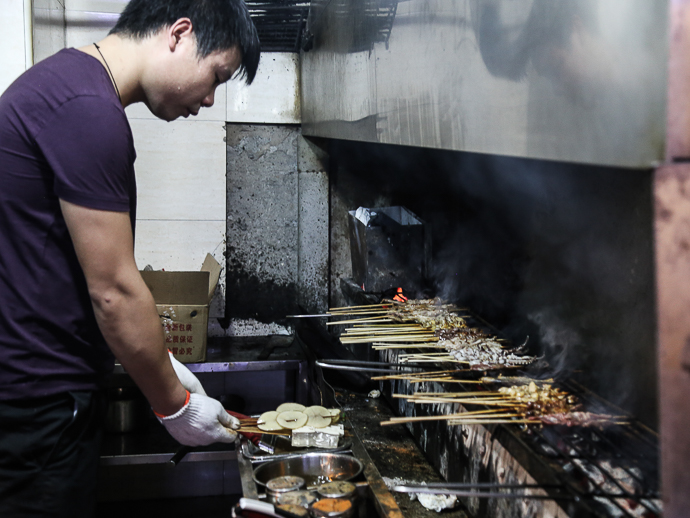
There are plenty seats inside the restaurants, of course, but hardly any are full. “Many of our local customers have moved away since the new developments started,” Zhang says, pointing to a cavernous hole of demolished lane houses that once housed Shouning Lu’s residents.
Though it’s not all bad news for Shouning Lu. Since the crackdown, the practice of aggressively hawking customers into the restaurants has been curtailed. “The chengguan are here every day now,” Zhang notes, looking over her shoulder at a trio of law enforcers who police the street nightly.
Zhaozhou Lu
A worse fate awaits at the nearby Zhaozhou Lu – home to some of the city’s most famous street food vendors. Here, vast stretches of the street, which comes alive at night with the scenes of locals eating at streetside tables, are to be demolished this summer, bringing an end to one of Shanghai’s last great food streets. The reason? To make way for a new commercial and residential development.
One of the city’s oldest neighborhoods, Zhaozhou Lu brings together an astonishing culmination of traditional eateries, run by both locals and waidi operators from as far as Dongbei and Anhui. If food has the ability to bring people together, this street is testament.
But for the street's more scalable eateries, this isn’t the end. Erguang Hundun, famous for selling enormous stuffed wontons and pork cutlets, has been open 22 years. It is now preparing to close its famous Zhaozhou Lu location.
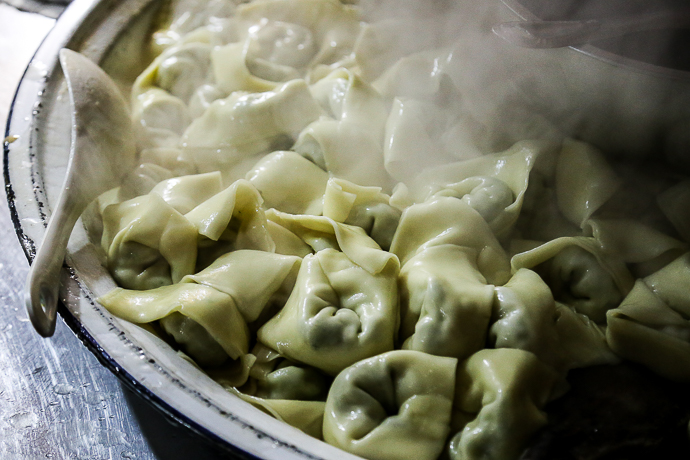
Proprietor Mrs Wang has already begun asking their loyal customers to find them at their new location (at 109 Huangjiaque Lu) but is unsure of her less fortunate neighbors’ fate. “When this street goes, that’s the end for a lot of these vendors,” she explains. “They’ll have to find new locations if they carry on making street food, probably out of town – some as far as Sheshan.”
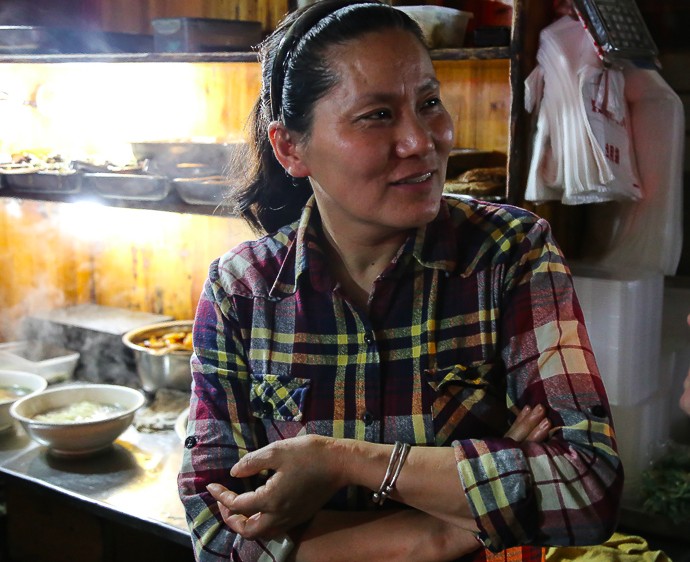
Further down the street, we come upon scenes of vendors making doujiang (soymilk) in the streets. Boiling vats of the stuff sit upon naked gas fires, and deep fryers for youtiao (fried dough crullers eaten along with the soymilk) spit fiercely.
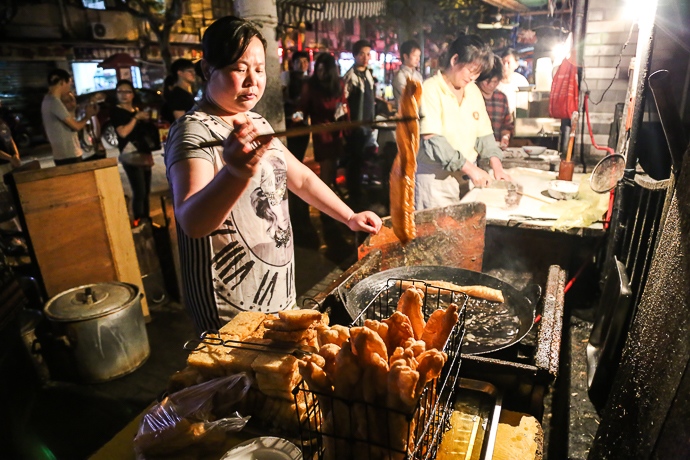
The most popular of such vendors is Lao Shaoxing, arguably Shanghai’s most famous doujiang and youtiao business. Attracting a line of at least 10 people, the family-run operation is presided over by the eternally grouchy patriarch (pictured below).
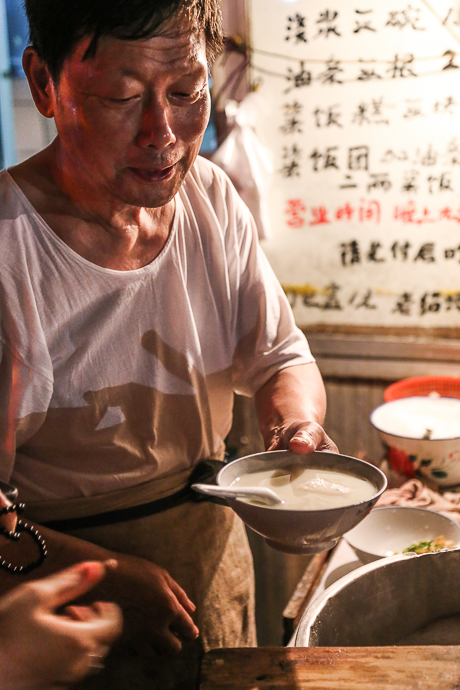
For him, the end of the street means the end of the business. “I have no plans to open a new shop elsewhere,” he says dismissively while pouring us a bowl of doujiang. “Once the street’s demolished, that’s it for me; I’m too tired.” It’s a distressing thought to contemplate that this Shanghainese culinary tradition may cease to be passed down to the next generation.
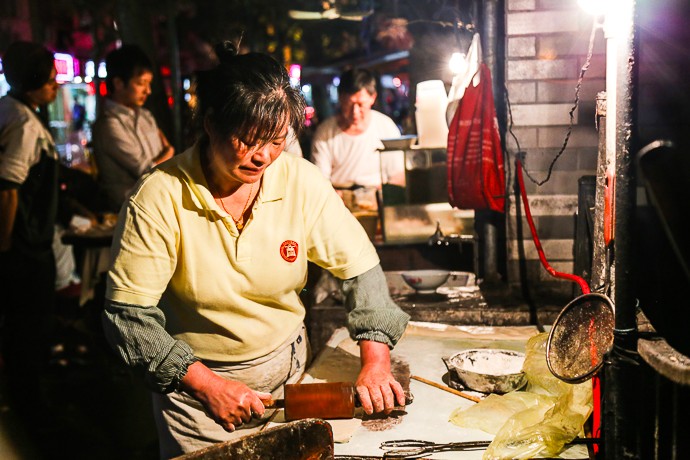
Other famous food vendors in the area have been lucky to avoid the same curse. The proprietor of Changjiao Mian (‘long foot noodles’), a noodle shop run from a run down lane house by a husband and wife duo. Thanks to the business’ reputation (Anthony Bourdain ate there on a recent visit), it’s a surprisingly lucrative business – generating enough income to put the couple’s daughter through medical school at Boston University.
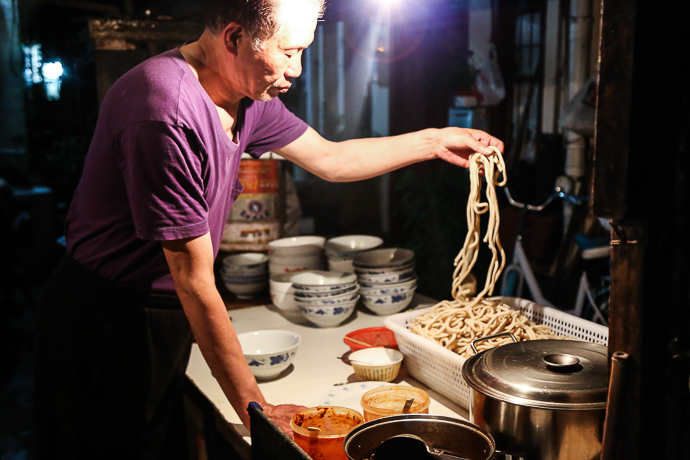
“I don’t care about the street being demolished, it doesn’t concern me,” he says brusquely as we collect a bowl of his unusually thick beef noodle soup. Thanks to its hidden location down an alleyway, Changjiao Mian has remained unscathed by the chengguan crackdowns. Nevertheless, we can’t help but think that as the neighborhood around him changes and rents hike upwards, that Changjiao Mian’s position in this soon-to-be modernized area will be precarious.

Jamie Barys explains that the chengguan don’t even bother coming here these days since the days of this street are already numbered. As such, a handful of cart vendors have crept back to the street’s corner. The removal of roving street food vendors is partly an effort to tidy up areas of the city that are earmarked for new development, but is also a response to the food safety scandals that rocked China in recent years.
One cart vendor, a former chef for the Jinjiang Corporation, has a foot in both camps. “I can see why the chengguan came to keep the street food in order,” he tells us. “Street food should be more organized in order to raise safety standards. Some of the carts were using bad quality ingredients and making people sick.”
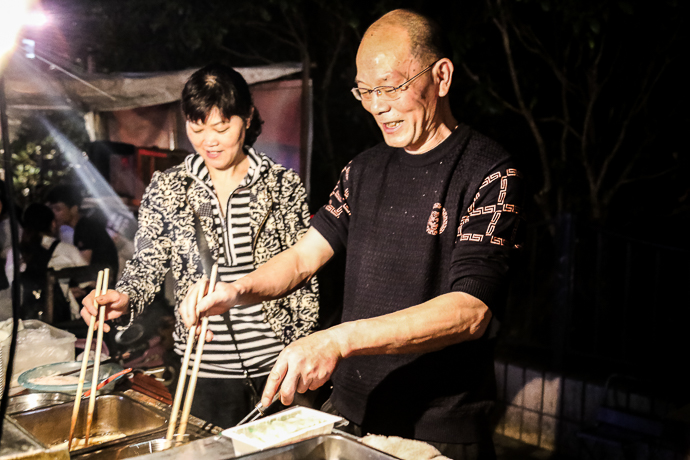
Despite being one of the cart pushing vendors himself, we can’t help but think he’s right. Places like Singapore with their organized yet authentic hawker centers, and the vibrant night markets of Taipei get it so right, protecting their own valuable cultural heritage while making it safe for consumers and easy for the authorities to regulate. Whether that will come to fruition in Shanghai remains to be seen, but for now, visit the last bastions of the city’s once great food streets before they are gone forever.
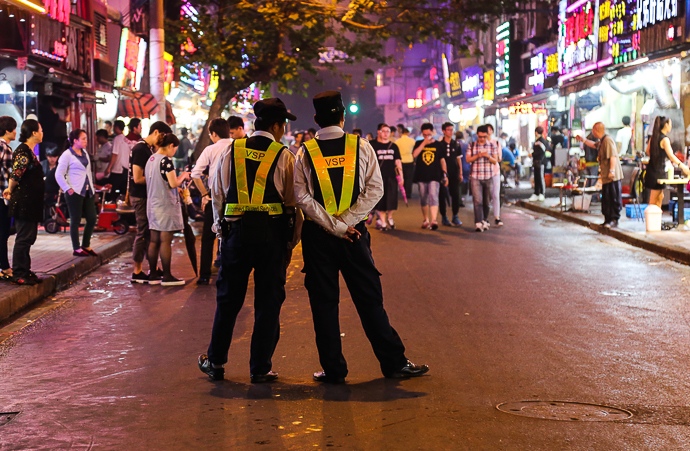






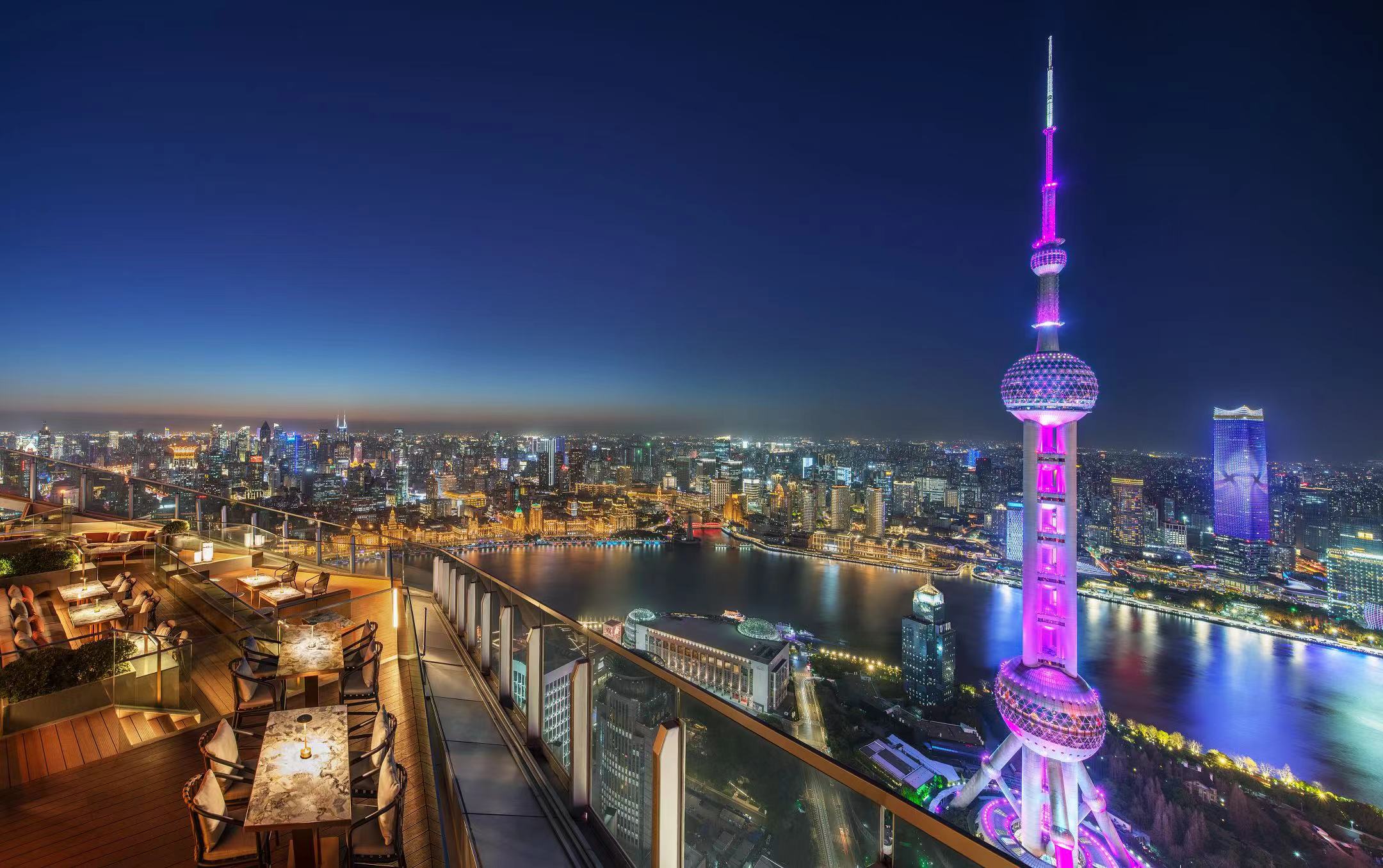















0 User Comments